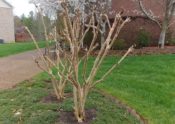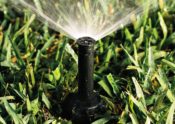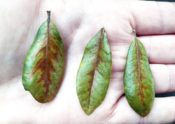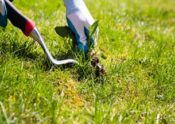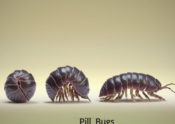
Pill bugs, doodle bugs, roly-polies. These little critters have some cute names, and it’s so fun to watch them roll up into a little ball when you touch them. They are a harmless bug with no bite or sting, and I always enjoy watching them crawl around. Pill bugs have become a hot topic of discussion in our demonstration garden after they munched their way through a few rows of tender vegetable plants.
The common pill bug, Armadillium vulgare, is an isopod. This is a type of Crustacean that has adapted to life on land. They actually breathe through gills and like wet environments. Pill bugs are usually about one centimeter long and gray or brownish in color. Their thorax is made up of seven overlapping plates and they have seven pairs of legs. Pill bugs can roll up into a tight little ball when they are disturbed, which is how they get their fun roly-poly name. (more…)
